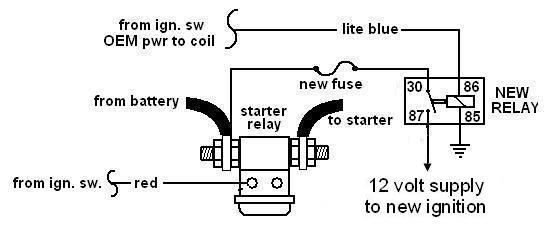Its a Ford Duraspark ignition, a late 1970s era ignition, Ford's first breakerless ignition system, triggered by a magnetic pick-up inside the distributor. The distributor is a rebuilt Ford distributor, but the module appears aftermarket to me. The coil is definitely aftermarket. Its was a reliable ignition, the Ford modules would run 10 years or 100,000+ miles. But an aftermarket module throws a big question mark into that equation.
If you're looking for a simple upgrade to a breakerless ignition, the MSD #8350 Ready-To-Run Pro-Billet distributor is an inexpensive, quick to install all-in-one ignition upgrade. The module is built into the distributor, providing the simplicity of a 3-wire hook-up. It utilizes a reliable magnetic trigger, it produces a 7.5 amp single spark, it has a 10° vacuum advance, and the centrifugal advance is easy to adjust with the supplied stop bushings and springs. Since the ignition does not produce multiple sparks the factory tach will work just fine without the need for a tach adapter. The distributor is tall, barely fits where it needs to go, but it fits. You'll need one of the recommended MSD coils to compliment it.
Compatible coils include:
(A) Chrome Blaster 2 #8200 (140 milliamp)
(B) Blaster 2 #8202 (140 milliamp)
(C) Blaster SS #8207 (300 milliamp)
Once the distributor is installed in the motor and the timing has been set, the phasing of the distributor’s rotor should be checked to insure the rotor is aligned with the terminal posts in the cap through the full range of centrifugal and vacuum advance. This is accomplished by drilling an inspection hole in the distributor cap near the post for cylinder #1 and observing the rotor with a timing light while the motor is running. Since you're drilling a hole in the distributor cap, you'll need a spare cap right off the bat.
I also strongly advise you to bypass the original ignition power circuit, which is routed through the ignition switch. Install the following circuit to supply your new ignition, whichever one you choose.

-G
